Three times a week, the Martha Rose sets out of Menemsha’s cozy harbor and, engine roaring, begins the 14-hour journey to the local scalloping beds. In weather fair or foul, the 77-foot fishing vessel chugs out of Menemsha Bight, rounds the nose of Aquinnah, and then charts a steady course to the southeast. The sea scallop beds currently designated as fishable lie one hundred miles out, and some thirty or forty fathoms down. Once the Martha Rose arrives, her crew of three waste no time putting out the ship’s dredge and preparing the deck to bring in the first haul.
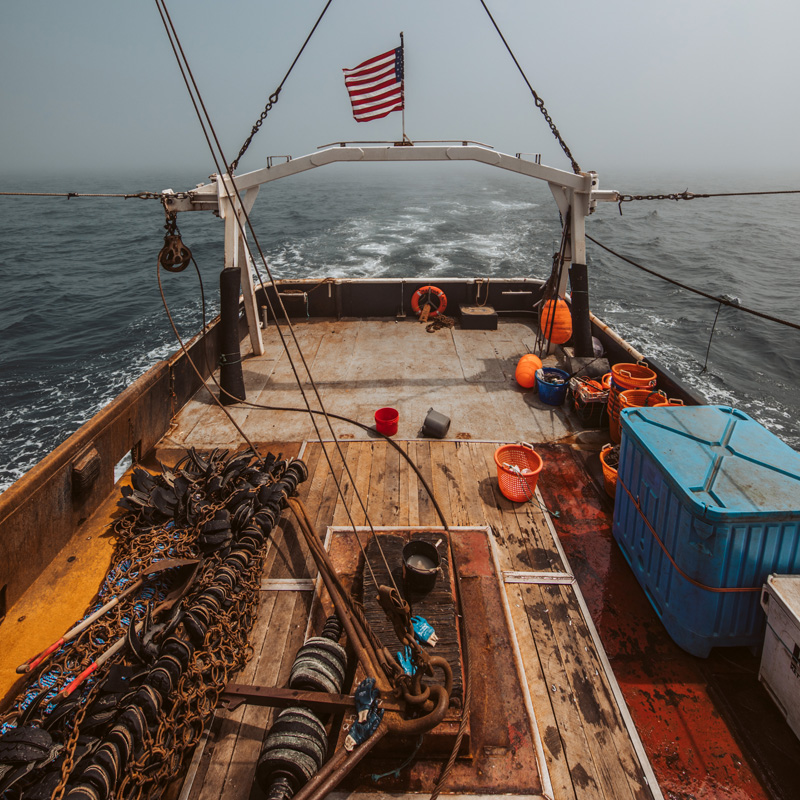
It can take five hours, or twelve, to bring in the ship’s quota of 600 pounds, but either way, the freshness of the catch is the top priority. As soon as the dredge comes in and the scallops are emptied onto the deck, the crew gets to shucking. Each scallop is expertly opened, and the adductor muscle — the perfectly tender, buttery morsels that compel people to line the docks of Menemsha for hours — are separated from the shell and the less sought after organs, rinsed in salt water, and put on ice.
Once the daily quota has been met, the Martha Rose turns up to the northwest and begins her voyage back to Dutcher Dock, delivering her bounty back to the community.
Having heard rave reviews of these scallops and the fresh-off-the-boat marketing strategy, I decided to take a scenic bike ride up to Menemsha to get the inside scoop from the ship’s captain, Wes Brighton. I also managed to snag the last pound of scallops on board that day, but more on that later.
Wes has been eyeing the sea for as long as he can remember, watching his uncle and other role models brave what he thinks of as the last frontier — the open ocean and the storms that break across her vastness — to harvest the plenitude of the ocean and provide for the Island community. For the past 17 years, he has been carrying out this legacy. Wes also dedicates ample energy to ensure that future generations of Vineyard fishermen and women are able to access the local fisheries, and that the undersea ecosystems are healthy and supporting abundant biodiversity when they get there.

This is a loftier goal than one might anticipate.
There’s something about buying seafood on an island — perhaps the proximity to the sea, or the seemingly ubiquitous views of fishing boats gently rocking in their slips — that lulls one into believing that anything you might purchase has been locally caught. In actuality, locally procured seafood is much more of a luxury than we realize. During our chat in the wheelhouse of the Martha Rose, Wes introduced me to the highly regulated system of fishing quotas. In brief, the total number of permits is determined based on various conditions of a given fishing area. Numbers stay low to ensure the health and longevity of fisheries, however this has proven to make permits prohibitively expensive. They are so sought after that families typically hand them from one generation to the next; those that do not stay in families have recently been bought up by large corporations for vast sums of money. This leaves little space in the industry for the local fishermen and women we might imagine having caught the fillets we get from local vendors. Wes put it simply, “With more permits we’d have more locally caught food, which despite local fish markets’ best efforts, is simply not possible given the present lack of permitting here.” Despite his present success, this issue affects Wes directly, as the Martha Rose is capable of managing many times her present daily quota. Without a permit for a larger quota, however, the ship is required to make dozens of long voyages in order to fulfill a seasonal total of 25,000 pounds, in 600-pound increments. Should Wes be able to secure the permitting he hopes to, he is eager to adopt a more environmentally sustainable model of fishing to meet Island demand, while cutting down the number of weekly trips and the fuel required to make them.
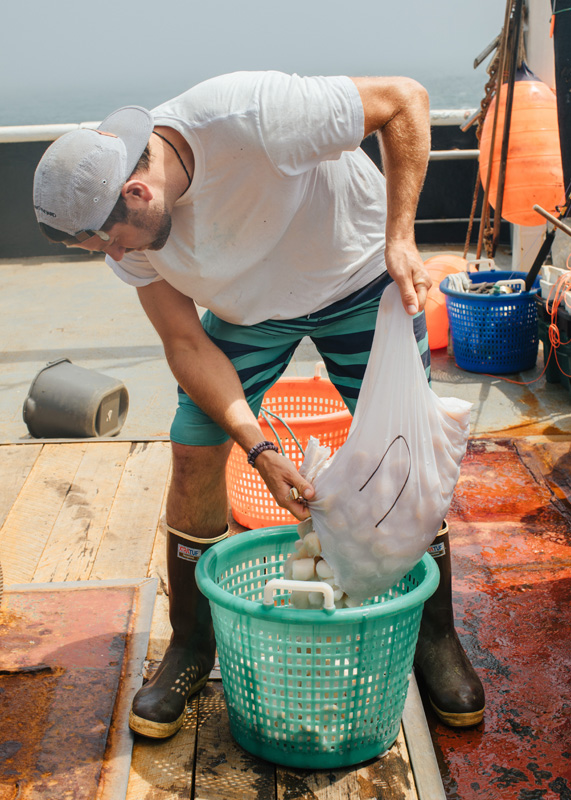
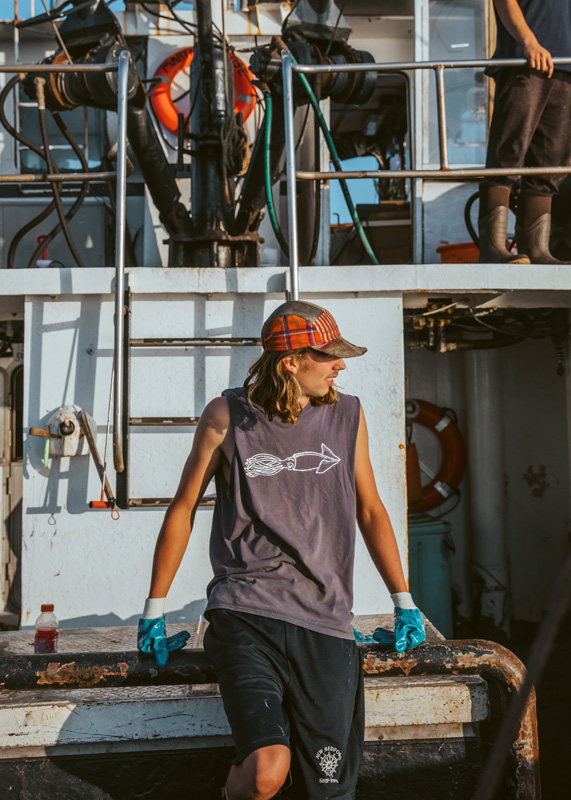
Wes is on a mission to change this pattern both for his own boat and others, by bringing permits back to Island fishermen and women. On a community level, Wes is deeply involved in the Martha’s Vineyard Fisherman’s Preservation Trust, a nonprofit founded to support small boat fishermen and consolidate funds to bring community sustaining permits back to the Island. His commitment to this cause is simple, and I think we can agree with his rhetorical question, “Do we want our community to have a seat at the table, or do we want to buy fish from large corporations that catch and treat their fish however they want?” This seat at the table sits at the core of Wes’ values, and he strives to include the whole community in his work. As he put it, “It was always in our plan to market directly to the Island and try to reunite the people that come here and the people who live here with harvesting fish and shellfish around the Island itself.”
Having spent years looking for the right boat and the funding to make it work, Wes was thrilled to find the 40-year-old Martha Rose last October. After several arduous months bringing her up to date and preparing her for her role as a scalloper, she took her maiden voyage on the first day of 2020. After a harsh season of winter scalloping and a hard earned respite, Wes and his crew, Otto Osmers, Chris Mayhew, and co-captain Ian Andres, got back onboard and back to business in early April. Wes credits his crew with much of the ship’s success, and is thrilled to work alongside such dedicated 20-somethings, knowing they’ll carry on the fishing legacy of the Island and someday bring aboard the next generation.

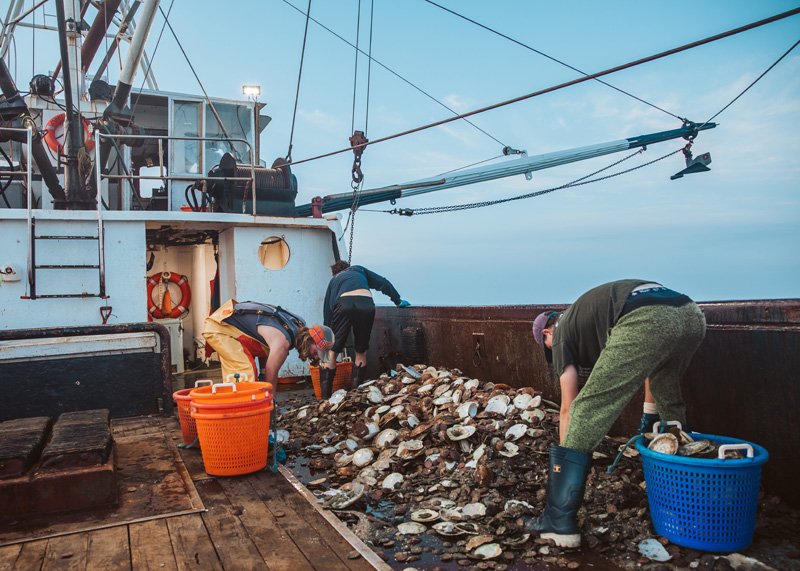
The idea to sell their springtime catch dockside — for which the Martha Rose has earned almost overnight renown — was well in the works before the COVID-19 crisis crashed onto our shores. It just so happened that the arrival of the pandemic brought with it an inclination to avoid grocery shopping in excess, and it created some major voids on the list of pre-COVID-19 daily activities. As Wes recalled gratefully, the rollout of the new strategy was met with socially distanced lines of quarantiners, eager to wait in the fresh air for fresh food, and they sold out each 600-pound haul in the span of a morning for more than a month.
As restaurants are finding creative ways to welcome in customers in these strange times, Wes has begun selling to many local chefs as well. At present, you can find scallops from the Martha Rose on the menu at 19 Raw, Alchemy, Port Hunter, the Harborview, Sweet Life, Redcat, as well as on ice at Larsen’s in Menemsha, Menemsha Seafood, and Edgartown Seafood. Meanwhile, Wes also sends a couple hundred pounds to the West Tisbury Farmers Market twice a week, and will continue to sell dockside in Menemsha on Saturdays.
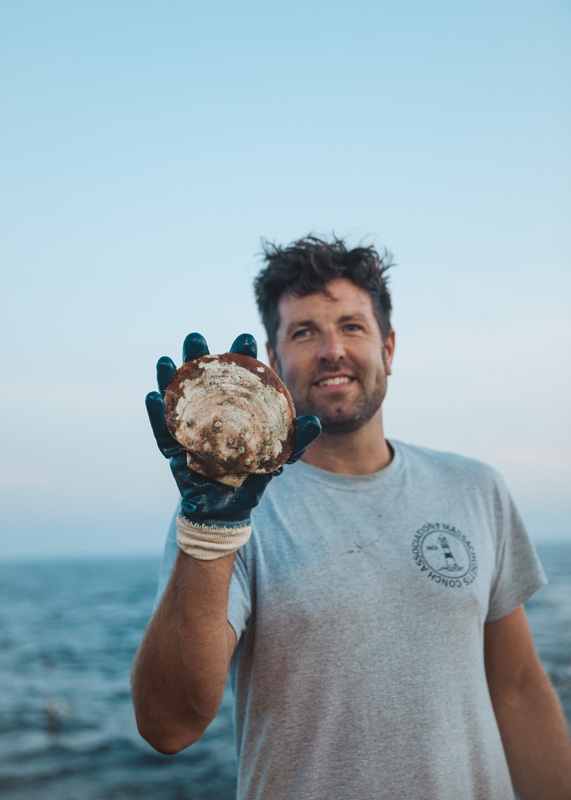
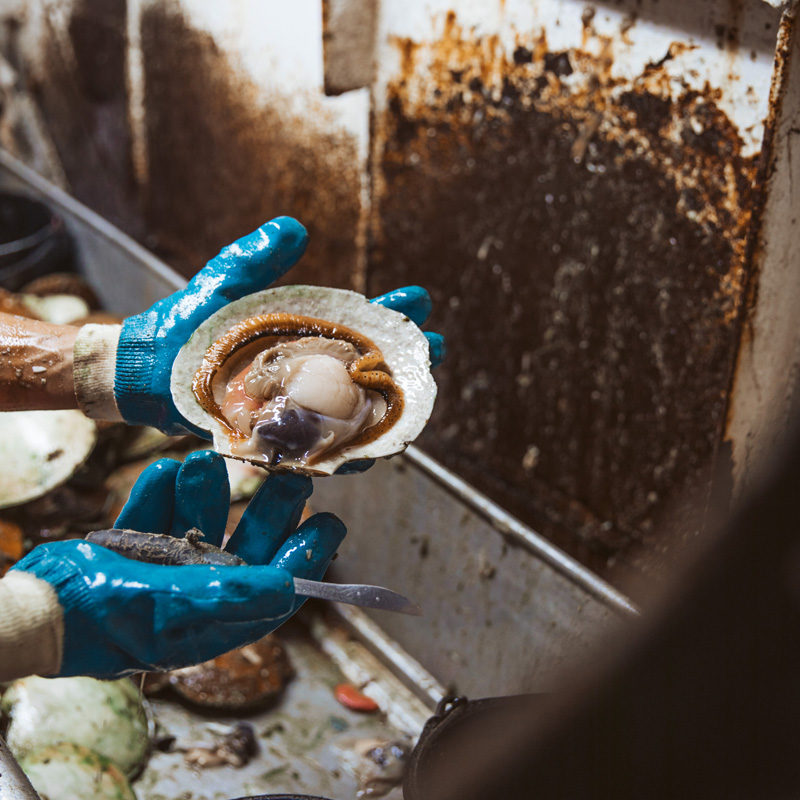
As far as Wes is concerned, marketing to the community directly — whether on Dutcher Dock, at the Farmers Market, or at local restaurants — is one of the most important parts of his work. Within this goal, ensuring that his crew is happy and diligent, and that their catch is of the highest standard, rank at the top of the list. Interestingly, most commercially marketed scallops — and many other types of seafood for that matter — are treated with a chemical called sodium tripolyphosphate, commonly referred to as STPP. It is a preservative that essentially causes the seafood to retain moisture in order to appear fresh for longer periods between processing and sales. Over the long term, some argue that it may cause health concerns, and as such, Wes is ardently against the use of STPP. When you buy scallops from the Martha Rose, the only thing they’ve been dipped in is sea water, which ensures that we get the freshest scallops around. Not to mention how pearly, plump, and gorgeously textured they are.

When I asked Wes if he still enjoys eating scallops after working with them almost nonstop since his maiden voyage with the Martha Rose back on January 1, his response caught me completely off guard. Somewhat ironically, Wes is allergic to shrimp, lobsters, and crabs to the extent that he cannot touch them. This affliction thankfully does not extend to scallops. He laughed and told me that he often eats scallops when he has been too busy to get to the store, and always keeps a few pounds in his freezer for these moments.
On my bike ride home after our conversation, with the day’s last pound of scallops on ice in my backpack, I considered the list of ways Wes had mentioned preparing them. Pan seared with lemon and white wine, grilled with teriyaki, crudo, or maybe a ceviche … So many options.
I ended up pulling them out of the bag and putting them directly on the grill alongside some locally grown veggies. Easiest, best meal I’ve made all summer. My family and I were in ecstasy over the delicate texture and luscious flavor of these deep sea gems.

